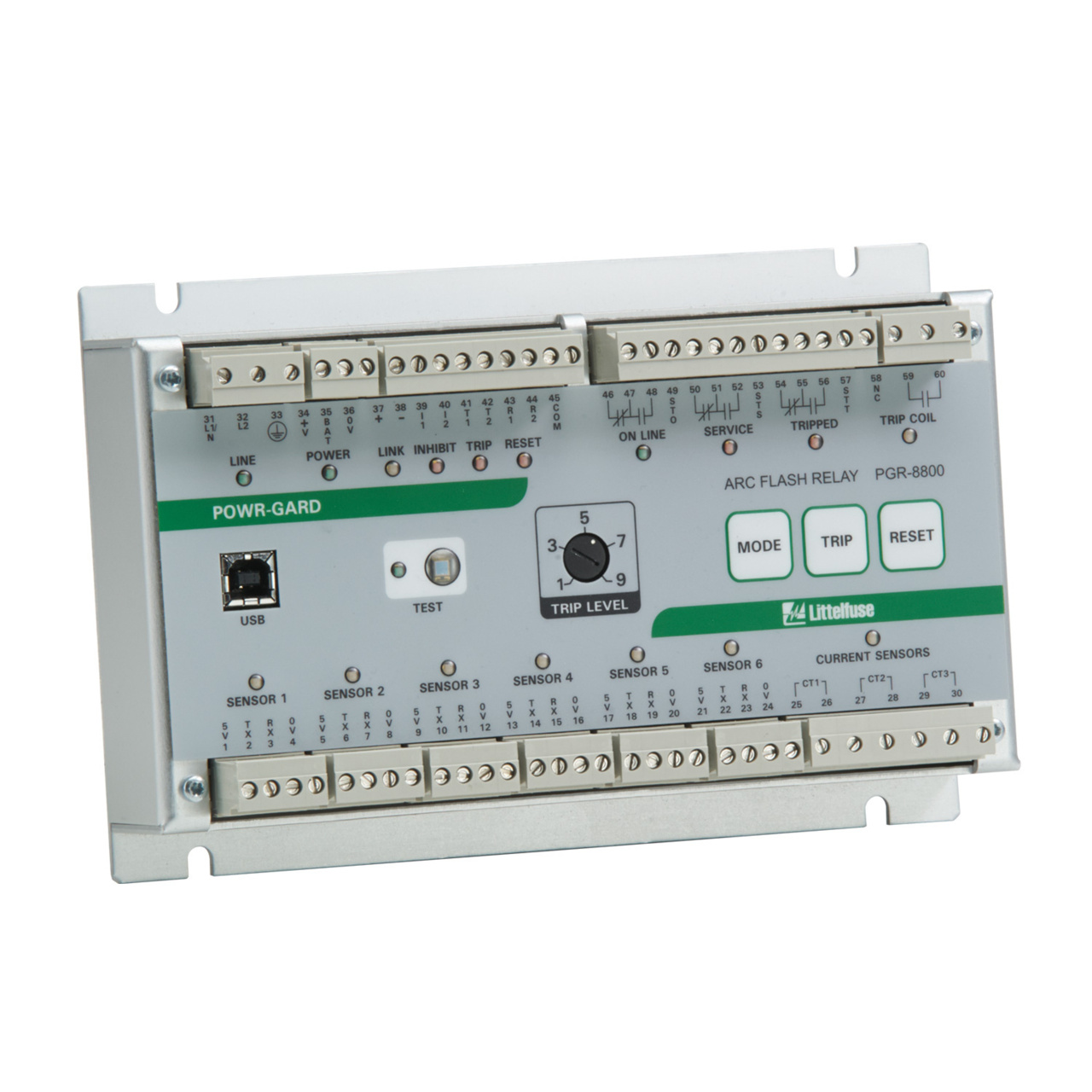
The PGR-8800 series arc-flash relay is a microprocessor-based protection relay that limits arc-flash damage by using light sensors to rapidly detect an arc and then trip a circuit breaker. Phase-current-transformer inputs are provided for current-constrained, arc-flash protection and, when so equipped, a programmable definite-time overcurrent function can be enabled. An optical sensor on the PGR-8800 and an adjustable trip-level reduce the chance of nuisance tripping by setting a threshold for ambient light. The PGR-8800 accepts PGA-LS10 point sensors and PGA-LS20/PGA-LS30 fiber-optic sensors, which are designed to collect light over a wide angle and with high sensitivity. Sensors, inputs, and connections are monitored to ensure fail-safe operation. A secondary solid-state trip circuit provides a redundant trip path. A USB port is used for configuration and access to event logs and graphs. For fast fault location, front-panel and sensor LEDs indicate sensor health and which sensor(s) detected an arc fault. A maximum of four PGR-8800 units can be linked into one system.
Features & Benefits:
- Arc-flash trip time: <1 ms: Limits arc-flash damage and risk of injury
- Multiple sensors (up to 24): A single unit can monitor six sensors. Up to four PGR-8800 units can be linked into one system
- Fail-safe system: Continuous monitoring of optical sensors and inputs ensures protection
- Redundant trip circuit: Solid-state backup arc-detection circuit adds a second layer of safety
- Adjustable light sensitivity: Allows for operation in bright environments and maximum sensitivity in dark environments
- LED indication (on unit and each sensor): 18 LEDs provide at-a-glance status for module and I/O state
- Current detection: Phase-CT inputs provide overcurrent protection and prevent nuisance trips
- Optical detection: Point and fiber-optic sensors provide wide detection area with sensor health trip indication
- Digital inputs (6): Two each: remote trip, inhibit, and reset inputs
- Service mode: Allows for system test without tripping
- Trip coil contact: Solid-state 24–300 V dc/24–300 V ac IGBT
- Indication contacts: Form C and status outputs
- USB interface: Data logging and configuration software use a USB interface with no drivers or software installation
- Built-in sensor: Can be used in single-sensor systems, as a seventh sensor, and for calibration
- Universal power supply/battery backup: 100–240 V ac, 14–48 V dc, or 110–250 V dc supply accepted. Ability to charge and run off an external, user-supplied 24 V dc battery
- Data logging: On-board event recorder helps with system diagnostics
- Modbus: Remotely view measured values, event records, and reset trips
- Upstream tripping: Ability to trip upstream device if the local breaker fails to clearthe fault